Have you ever tasted a great flavorful smoked cheese and wondered if you could make it yourself? It’s easier than you think!
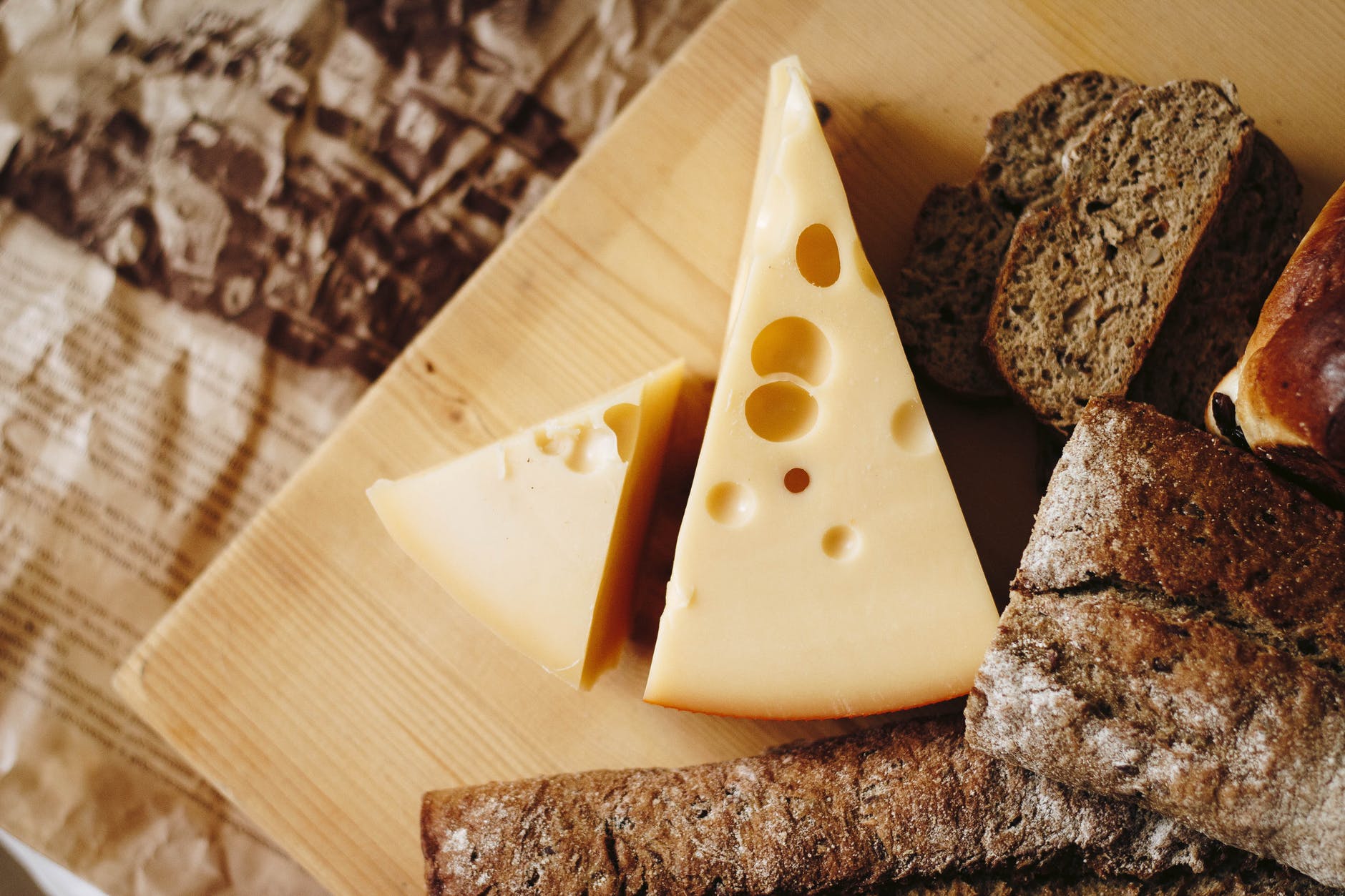
On our quest to be more self-sufficient, my husband Mike and I have found a frugal way to create our own flavor-blends of smoked cheese.
Here’s how you can get started:
- Equipment
- Selecting Your Cheese
- Selecting Smoke Flavor
- It’s Smoking Time!
- How to Tell When Done
- Cheese Aging and Storage
- Serving Suggestions
How to Cold-Smoke Cheese
Equipment
What makes this so incredibly easy, is that you only need a small pellet smoker tube to use with your everyday gas or charcoal grill. Any grill can be used as long as it has a snug-fitting cover.
We did a lot of research to find the best smoking tube. We chose this 12-inch pellet smoker tube on Amazon.com.
It also works great for smoking other foods such as chicken and pork on our Weber grill.
Other equipment you’ll need includes:
- Thermometer for inside the grill
- Timer
- Metal rack to put the cheese on
- Tongs for turning the cheese
- Storage container for the cheese once it’s smoked
Selecting Cheeses
When learning to smoke cheese, choose flavors of cheese that you already enjoy eating. For example, knowing how a smoked gouda tastes will help you gauge how well your smoking process worked. Harder cheeses are easier to cold-smoke because they have a higher melting point. I’ll discuss temperature in more detail farther in the article. Mike and I started off with cheddar, swiss and gouda.
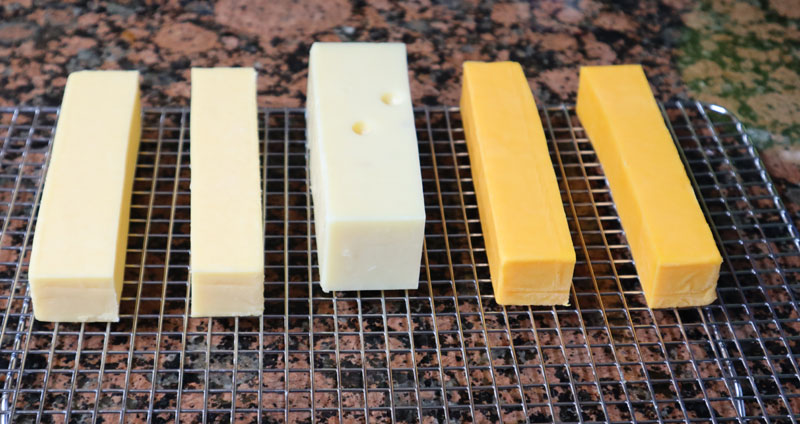
Selecting Smoke Flavor
Again, this is a matter of personal taste. You can try flavors you see for sale in grocery stores such as applewood smoked gouda or hickory smoked cheddar. Fruit woods such as apple and cherry tend to be sweeter. Woods such as oak, pecan, or hickory are stronger, almost bacon-ish. We opted for a blend of sweet and smoky using Bear Mountain Gourmet BBQ blend.
It’s Smoking Time!
Now it’s time to select a day for smoking.
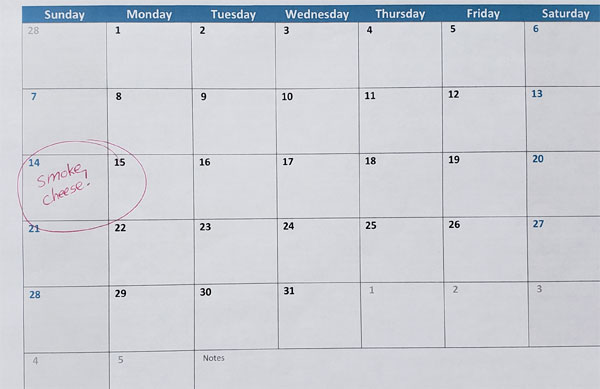
To keep the cheese from melting, the interior of the chamber must stay below 90° F (32°C). A smoker tube will put off heat, so the colder outside the better. Winter is the best season, or cooler days of fall or spring. If the day is 60°F or cooler, you should be able to keep the chamber cool enough.
Temperature tips:
- Smoke early morning or at night.
- Place a pan of ice cubes below or near the cheese to help it stay cooler.
- Keep a probe type of thermometer inside the chamber and check the temp often.
Placement of Cheese and Smoker
Prepare your cheese by removing from refrigeration just before smoking. Cold cheese will absorb smoke better. To get the best smoke coverage, cut it into smaller chunks. We cut blocks of cheese in half or quarters depending on the size block we purchased. Also, make sure there is no rind on the cheese because that will prevent the smoke from penetrating the cheese. It will need to be cut off before smoking.
Place your tray of cheese on one side of the grate inside your grill.
Fill the smoker tube according to manufacturer’s directions. Light the pellets as instructed, then lay it across the grate along the other side of the grill.
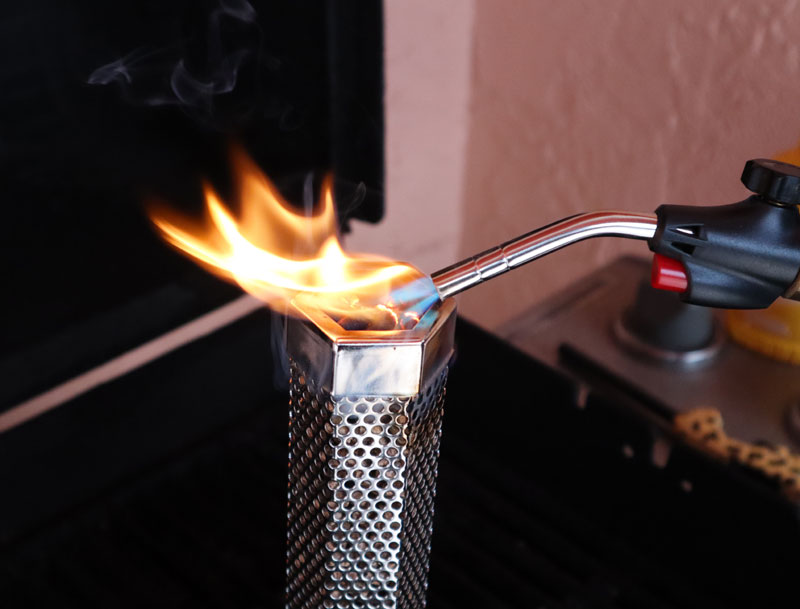
You can also place the smoker under the grate, but still keep it at the far side to prevent the heat from warming the cheese.
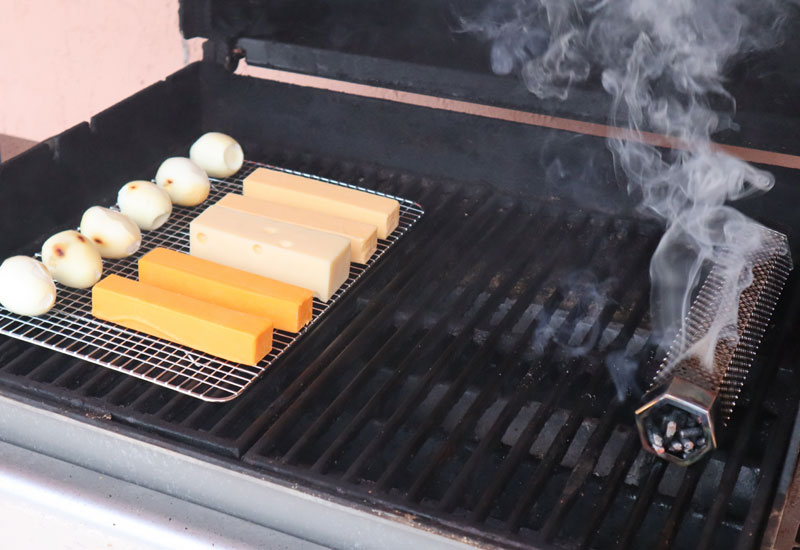
Smoking Process
Once you have the smoke burning well, keep the cover closed for the next 2-4 hours.
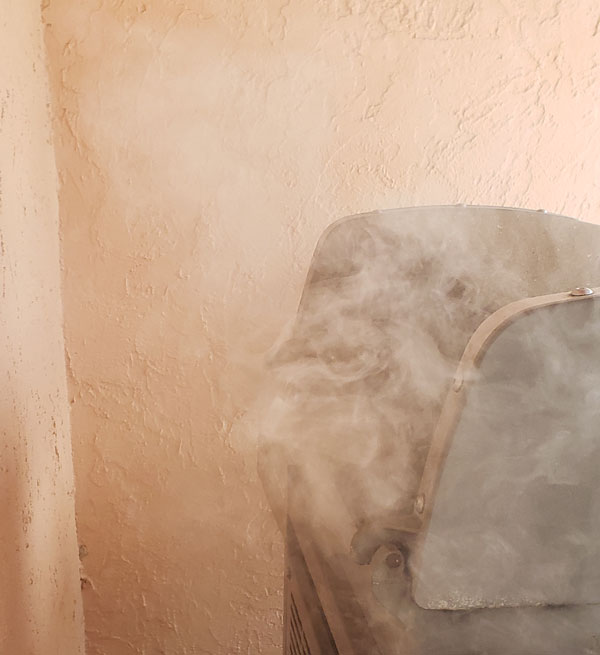
Turn the cheese every half hour for even smoke coverage.
Keep an eye on the amount of smoke coming out of the vents and around the cover. You want a nice steady smoke being produced.
If the temperature gets too high, you may have to partially raise the lid a minute or so to cool down the grill chamber. A cold day should help prevent that problem.
How to Tell When the Cheese is Done Smoking
After two hours, you could taste a sample to test the smokiness, but a true flavor won’t be apparent until several weeks later after cold storage. We’ve found a 4-hour smoke gives the best flavor without getting any bitterness that may occur with too much smoke.
When the cheese is done smoking, it will look darker. It may have some oil that seeped out. Simply wipe it off with a paper towel after you’ve removed it from the grill.
Cheese Aging and Storage
To store the cheese, wrap tightly in butcher paper or plastic wrap and seal in a plastic zip-lock bag.
You can also vacuum-seal it. This eliminates any air from drying out the cheese.
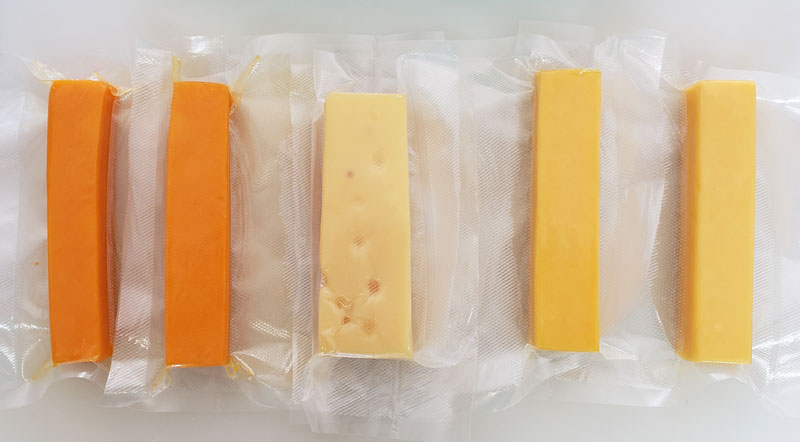
Place it in your refrigerator or a very cold root cellar or cold room.
Allow the cheese to age at least 2 weeks before tasting. The longer it ages, the more the smoke will penetrate the cheese and mellow out the flavor. I suggest 6–8 weeks.
Serving Suggestions
Your smoked cheese can be used in all kinds of recipes:
- Topping for salads, baked potatoes, casseroles, or even pizza
- Homemade smoked mac-n-cheese
- Potatoes au gratin
- Grilled ham and cheese
- Cheese platters
- Stuffed jalapenos
- Cheese bread or breadsticks
Once you get started smoking cheese, a whole new world of flavor exploration opens up.
As you can see from some of the photos, we also smoked hard-boiled eggs. They made some great smoky deviled eggs! We’re now on a search for even more things to cold-smoke.
Mike and I hope you get hooked on cold-smoking too! Let us know how things went with your first try. What kind of cheese/smoke flavor blend did you create? We’d welcome any suggestions.
Thanks,
Alisa
[…] After smoking your DIY smoked cheese, it’s key to age and store it right. This keeps the flavor and texture just right. The cheese needs at least 2 weeks to age, with some saying 6-8 weeks for the best taste1819. […]